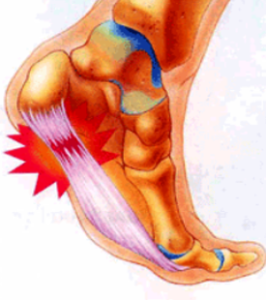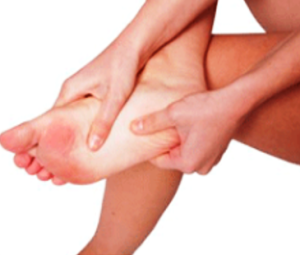Plantar Fasciitis
Plantar Fasciitis
The plantar fascia is a band of tissue, similar to a tendon, which runs from the front of the heel bone (calcaneus) to the ball of the foot (metatarsals). This dense strip of tissue helps to support the arch of the foot and acts as a rubber band to absorb shock as you walk.
When the foot is on the ground the full weight of the body is concentrated on the plantar fascia. This force stretches the tissue as the arch of the foot tries to flatten from the weight of the body. This leads to stress on the plantar fascia where it attaches to the heel bone. Small tears of the fascia can happen. However, the body normally repairs these tears.
As this process of injury and repair repeats itself over and over again, inflammation of the plantar fascia occurs resulting in plantar fasciitis/fasciosis.
Symptoms
Commonly associated symptoms may include;
- Pain when getting out of be in the morning or after sitting.
- Recurrence of pain throughout the day.
- Heel pain after long periods of standing.
- Pain that increase over a period of months.
An accurate clinical examination by a podiatrist is required to ensure the most suitable treatment is undertaken. Diagnostic imaging such as X-rays and Ultrasounds may be ordered to further assist the examination.
Treatment
Early treatment of plantar fasciitis is essential to develop an affective treatment program. At Sydney Foot Clinic the treatment options offered include;
- Rest and Ice – 20 min every two to three hours advised in the first 48-72 hours of the injury taking place
- Non-steroidal anti-inflammatory medication (NSAIDs) – help reduce the pain and inflammation
- Exercise program – exercises, stretching and rehabilitation may be prescribed to help improve range of motion and stabilise the foot and ankle.
- Custom made orthotic therapy – orthotics may be prescribed to address any biomechanical factors to reduce the stress on the plantar fascia.
- Dry Needling.
- Injection therapy – Injections of a local anaesthetic (Prolotherapy) provide pain relief, and an injected corticosteroid may be useful in treating the inflammation.
- In severe cases, referral for surgical treatment may be required.
